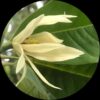- Empty cart.
- Continue Shopping
Chappangam (Pathimukham) Caesalpinia sappan
₹497.00Current price is: ₹497.00. Original price was: ₹848.00.
Genus : Biancaca
“The Chappangam Plant is a truly remarkable specimen with its distinct appearance and foliage. Its vibrant colors and intricate patterns make it a captivating addition to any garden or indoor collection. Explore the enchantment of the Chappangam Plant and elevate the aesthetics of your surroundings.”
Add to cart
Caesalpinia sappan, also known as Sappanwood, is a plant species that belongs to the pea family, Fabaceae. It is native to Southeast Asia, but it is widely cultivated in other tropical and subtropical regions around the world. The plant is a small to medium-sized tree that can grow up to 15 meters in height.
The leaves of Caesalpinia sappan are compound and pinnate, with 8 to 12 pairs of leaflets. The leaflets are oval-shaped and have a pointed tip. The plant produces flowers that are small and yellow in color and grow in clusters at the end of the branches. The flowers are followed by pods that contain small, round seeds.
The heartwood of Caesalpinia sappan is the part of the plant that is most commonly used. It is a dark red or brown color and is used as a natural dye. The dye is extracted by boiling the heartwood in water, and it is used to color textiles, food, and cosmetics. The heartwood also has medicinal properties and is used in traditional medicine to treat a variety of ailments, including fever, cough, and diarrhea.
Caesalpinia sappan is also used in woodworking and as an ornamental plant. The wood is hard and durable and is used for making furniture, musical instruments, and other decorative items. The plant is often grown in gardens and parks for its attractive foliage and flowers. It prefers full sun and well-drained soil and is tolerant of drought and moderate cold temperatures.
Add a review
Currently, we are not accepting new reviews














Reviews
There are no reviews yet